Economy
Ottawa’s Regulatory Assault on the Extraction Sector and Its Impact on Investment
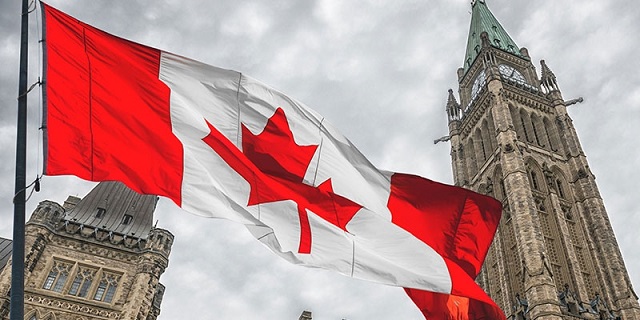
From the Fraser Institute
Business investment is a foundational requirement for a prosperous economy. It provides the resources to establish new companies, expand existing ones, and invest in new factories, machinery, and technologies. Business investment in Canada has declined markedly for over a decade. It is a major reason why Canadian living standards are stagnating in absolute terms and declining relative to many peer countries, particularly the United States.1
One factor behind declining business investment is the heavy regulatory burden imposed by the current federal government on the extraction sector, which includes: mining, quarrying, and oil and gas. Since 1990, this sector averaged 17.3 percent of total non-residential business investment, and reached as high as 28.7 percent of the total in 2013.2
The federal government has been particularly critical of the oil and gas sector. As an example of such sentiment, in a 2017 speech Prime Minister Trudeau said it would take time to “phase out” the oil sands, indicating the long-term goal of the federal government to eliminate the fossil fuel industry (Muzyka, 2017). The prime minister’s comments were followed by a number of new regulations that directly or indirectly targeted the oil and gas sector:
• In 2019, Bill C-69 amended and introduced federal acts to overhaul the governmental review process for approving major infrastructure projects (Parliament of Canada, 2018). The changes were heavily criticized for prolonging the already lengthy approval process, increasing uncertainty, and further politicizing the process (Green, 2019).
• In 2019, Bill C-48 changed regulations for vessels transporting oil to and from ports on British Columbia’s northern coast, effectively banning such shipments and thus limiting the ability of Canadian firms to export (Parliament of Canada, 2019).
• Indications from the federal government that a mandatory hard cap on GHG emissions would eventually be introduced for the oil and gas sector. In 2023, such a cap was introduced (Kane and Orland, 2023), excluding other GHG emitting sectors of the economy (Watson, 2022).
• In early 2023, the government announced new fuel regulations, which will further increase the cost of fuels beyond the carbon tax (ECCC, 2023).
• In late 2023, with limited consultation with industry or the provinces, the Trudeau government announced major new regulations for methane emissions in the oil and gas sector, which will almost inevitably raise costs and curtail production (Tasker, 2016).
The growing regulatory burden has a number of implications that impede or even prohibit oil and gas investment, by increasing costs and uncertainty, making it less attractive to invest in Canada. Both a 2022 survey of mining companies and a 2023 survey of petroleum companies identified the same three risks as inhibiting investment in Canadian provinces—uncertainty over disputed land claims, protected areas, and environmental regulations.3
It is also important to recognize that the Trudeau government introduced a carbon tax in 2016, which conceptually should replace regulations related to greenhouse gas (GHG) emissions such as those listed previously rather than be an additional policy lever used to manage GHG emissions.4
The regulations discussed above, as well as direct decisions by the federal government had tangible effects on the oil and gas sector:
• In late 2016, the Northern Gateway pipeline running from northern Alberta to Kitimat, British Columbia was cancelled by the Trudeau government, further limiting the ability of firms in Alberta to get their products to export markets (Tasker, 2016).
• In 2017, TransCanada Corp. cancelled its $15.7 billion Energy East pipeline, which would have transported oil from Alberta to Saint John, New Brunswick. The project was cancelled in large measure due to changes in national policy regarding the approval of large infrastructure projects (Canadian Press, 2017).
• While the Trans Mountain pipeline from Edmonton to Burnaby, BC was approved, Kinder Morgan exited the project in 2018 due to uncertainties and questions about the economics of the project, forcing the Trudeau government to take the ownership. The cost of the project has since increased by more than four times the original estimate to $30.9 billion (Globe and Mail Editorial Board, 2023).
• In 2019, US-based Devon Energy announced plans to exit Canada’s oilsands to pursue more profitable opportunities in the United States (Healing, 2019).
• In 2020, Teck Resources abandoned its $20 billion Frontier oilsands mine in Alberta because of increasing regulatory uncertainty (Connolly, 2020).
• In 2020, Warren Buffett’s Berkshire Hathaway decided not to invest $4 billion in Saguenay LNG, a liquified natural gas plant and pipeline, due to political and regulatory risks (CBC News, 2020).
The divestitures above are not an exhaustive list. Other companies including Norwegian Equinor (formerly Statoil), France’s TotalEnergies SE (formerly Total SA), US-based Murphy Oil, and ConocoPhillips have all reduced their investments in Canada’s oil and gas sector.
The government’s mounting regulations and hostilities towards the oil and gas sector did not go unnoticed outside of Canada. A 2018 article in The Economist listed the many failures to develop pipeline infrastructure in Canada to bring much-demanded oil and gas to market. Indeed, the piece called it a “three-ring circus” that risked “alienating foreign investors who are already pulling back from Canada” (Economist, 2018).
It is first important to acknowledge the overall decline in business investment in Canada since 2014. Overall, total non-residential business investment (inflation-adjusted) declined by 7.3 percent between 2014 and 2022.5, 6
The decline in business investment in the extractive sector (mining, quarrying, and oil and gas) is even more pronounced. Since 2014, business investment excluding residential structures and adjusted for inflation has declined from $101.9 billion to $49.7 billion in 2022, a reduction of 51.2 percent (figure 1).7

A similar decline in business investment of 52.1 percent is observed for conventional oil and gas, falling from $46.6 billion in 2014 to $22.3 billion in 2022 (inflation-adjusted) (figure 1). In percentage terms the decline in non-conventional oil extraction was even larger at 71.2 percent, falling from $37.3 billion in 2014 to $10.7 billion in 2022.8
Simply put, the declines in the extraction sector are larger than the total decline in overall non-residential business
investment between 2014 and 2022, indicating the magnitude of the overall effect of the decline in business investment in this sector.
The importance of business investment to the health of an economy and the rising living standards of citizens cannot be overstated. One of the major challenges facing Canadian prosperity are regulatory barriers, particularly in the oil and gas sector.
In that light, much of the regulatory burden added over the last eight years to the oil and gas sector should simply be eliminated. In some ways this is already being forced on the federal government through court decisions. For instance, in October of 2023, the Supreme Court of Canada ruled that parts of Bill C-69 were unconstitutional as they infringed on areas of exclusive provincial jurisdiction, requiring revisions to the Act (Dryden, 2023).
A careful and clear analysis is needed of the costs and benefits of the regulatory measures imposed on the oil and gas sector, including Bill C-48, the recent methane regulations, and the emissions cap. Based on this analysis, the regulatory measures should be adjusted to help improve the ability of Canada’s energy sector to attract and retain investment.
Author:
Business
Taxpayer watchdog calls Trudeau ‘out of touch’ for prioritizing ‘climate change’ while families struggle
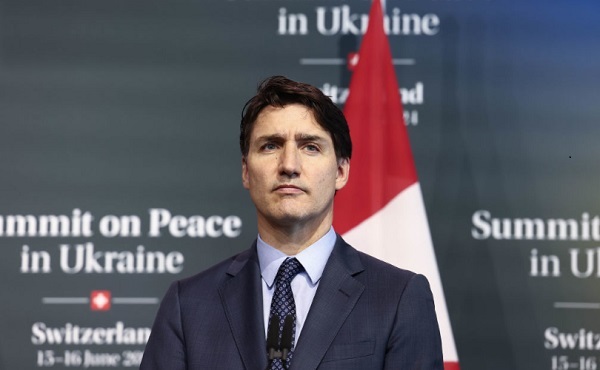
From LifeSiteNews
The prime minister told a G20 panel this week that fighting so-called ‘climate change’ should be more important to families than putting food on the table or paying rent.
Canada’s leading taxpayer watchdog blasted Prime Minister Justin Trudeau for being completely “out of touch” with everyday Canadians after the PM earlier this week suggested his climate “change” policies, including a punitive carbon tax, are more important for families than trying to stay financially afloat.
In speaking to LifeSiteNews, Canadian Taxpayers Federation (CTF) federal director Franco Terrazzano said Trudeau’s recent comments show his government “continues to prove it’s out of touch with its carbon tax.”
“Canadians don’t support the carbon tax because we know it makes life more expensive and it doesn’t help the environment,” Terrazzano told LifeSiteNews.
Terrazzano’s comments come after Trudeau told a G20 panel earlier this week that fighting so-called “climate change” should be more important to families than putting food on the table or paying rent.
Speaking to the panel, Trudeau commented that it is “really, really easy” to “put climate change as a slightly lower priority” when one has “to be able to pay the rent this month” or “buy groceries” for their “kids,” but insisted that “we can’t do that around climate change.”
Terrazzano said that the Trudeau government’s carbon tax in reality “impacts nearly all aspects of life in Canada by making it more expensive to fuel up our cars, heat our homes and buy food.”
“The carbon tax also puts a huge hole in our economy that we can’t afford,” he said to LifeSiteNews, adding that if Trudeau really wanted to help Canadians and “prove it understands the struggles facing Canadians,” then it should “scrap the carbon tax to make life more affordable.”
On Thursday, Trudeau, who is facing abysmal polling numbers, announced he would introduce a temporary pause on the federal Goods and Services Tax (GST) for some goods.
Conservative Party of Canada leader Pierre Poilievre this afternoon said about Trudeau’s temporary tax holiday that if he is serious about helping Canadians, he would cut the carbon tax completely.
People’s Party of Canada (CPC) leader Maxime Bernier called the move by Trudeau a cheap trick to try and “bribe” Canadians, noting that it will not work.
“What a ridiculous gimmick. Bribing Canadians temporarily with borrowed money,” Bernier wrote.
“When the real solution is to stop growing the bureaucracy, cut wasteful spending, stop sending billions to Ukraine, eliminate subsidies to businesses and activist groups, stop creating new unsustainable and unconstitutional social programs, eliminate the deficit, and THEN, cut taxes for real. None of which he will do of course.”
As reported by LifeSiteNews, a survey found that nearly half of Canadians are just $200 away from financial ruin as the costs of housing, food and other necessities has gone up massively since Trudeau took power in 2015.
In addition to the increasing domestic carbon tax, LifeSiteNews reported last week that Minister of Environment Steven Guilbeault wants to create a new “global’ carbon tax applied to all goods shipped internationally that could further drive-up prices for families already struggling with inflated costs.
Not only is the carbon tax costing Canadian families hundreds of dollars annually, but Liberals also have admitted that the tax has only reduced greenhouse gas emissions by 1 percent.
Economy
COP 29 leaders demand over a $1 trillion a year in climate reparations from ‘wealthy’ nations. They don’t deserve a nickel.
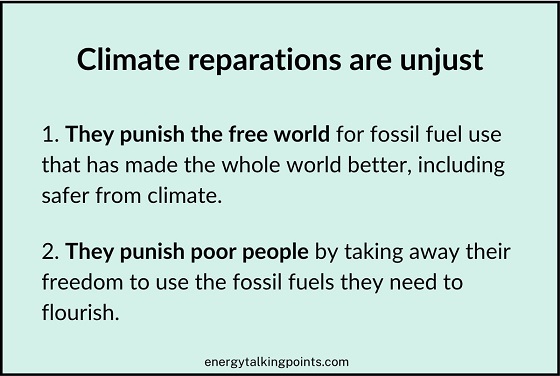
COP 29 is calling for over $1 trillion in annual climate reparations
- A major theme of COP 29 is that the world should set a “New Collective Quantified Goal” wherein successful nations pay poor nations over $1 trillion a year to 1) make up for climate-related harm and 2) build them new “green energy” economies. In other words, climate reparations.¹
- What would $1 trillion a year in climate reparations mean for you and your family?Assuming the money was paid equally by households considered high income (>$50 per day), your household would have to pay more than $5,000 a year in climate reparations taxes!²
- Climate reparations are based on two false assumptions:1. Free, wealthy countries, through their fossil fuel use, have made the world worse for poor countries.
2. The poor world’s main problem is dealing with climate change, which wealth transfers will help them with.
But free, fossil-fueled countries have made life better for poor countries
- Free, wealthy countries, through their fossil fuel use, have not made the world worse for poor countries—they have made it far, far better.Observe what has happened to global life expectancies and income as fossil fuel use has risen. Life has gotten much better for everyone.³
- The wealthy world’s fossil fuel use has improved life worldwide because by using fossil fuel energy to be incredibly productive, we have 1) made all kinds of goods cheaper and 2) been able to engage in life-saving aid, particularly in the realms of food, medicine, and sanitation.
- Without the historic use of fossil fuels by the wealthy world, there would be no super-productive agriculture to feed 8 billion humans, no satellite-based weather warning systems, etc. Most of the individuals in poor countries would not even be alive today.
Free, fossil-fueled countries have made the poor safer from climate
- The wealthy world’s fossil fuel use has been particularly beneficial in the realm of climate.Over the last 100 years, the death rate from climate-related disasters plummeted by 98% globally.
A big reason is millions of lives saved from drought via fossil-fueled crop transport.⁴
- The “climate reparations” movement ignores the fact that the wealthy world’s fossil fuel use has made life better, including safer from climate, in the poor world.This allows it to pretend that the poor world’s main problem is dealing with rising CO2 levels.
The poor world’s problem is poverty, not rising CO2 levels
- The poor world’s main problem is not rising CO2 levels, it is poverty—which is caused by lack of freedom, including the crucial freedom to use fossil fuels.Poverty makes everything worse, including the world’s massive natural climate danger and any danger from more CO2.
- While it’s not true that the wealthy world has increased climate danger in the poor world—we have reduced it—it is true that the poor world is more endangered by climate than the wealthy world is.The solution is for the poor to get rich. Which requires freedom and fossil fuels.⁵
Escaping poverty requires freedom and fossil fuels
- Every nation that has risen out of poverty has done so via pro-freedom policies—specifically, economic freedom.
That’s how resource-poor places like Singapore and Taiwan became prosperous. Resource-rich places like Congo have struggled due to lack of economic freedom.
- Even China, which is unfree in many ways (including insufficient protections against pollution) dramatically increased its standard of living via economic freedom—particularly in the realm of industrial development where it is now in many ways much freer than the US and Europe.
- A crucial freedom involved in rising prosperity has been the freedom to use fossil fuels.Fossil fuels are a uniquely cost-effective source of energy, providing energy that’s low-cost, reliable, versatile, and scalable to billions of people in thousands of places.⁶
- Time and again nations have increased their prosperity, including their safety from climate, via economic freedom and fossil fuels.Observe the 7X increase in fossil fuel use in China and India over the past 4 decades, which enabled them to industrialize and prosper.⁷
- For the world’s poorest people to be more prosperous and safer from climate, they need more freedom and more fossil fuels.The “climate reparations” movement seeks to deny them both.
- The wealthy world should communicate to the poor world that economic freedom is the path to prosperity, and encourage the poor world to reform its cultural and political institutions to embrace economic freedom—including fossil fuel freedom.Our leaders are doing the opposite.
Climate reparations pay off dictators to take away fossil fuel freedom
- Instead of promoting economic freedom, including fossil fuel freedom, wealthy climate reparations advocates like Antonio Guterres are offering to entrench anti-freedom regimes by paying off their dictators and bureaucrats to eliminate fossil fuel freedom.This is disgusting.⁸
- The biggest victim of “climate reparations” will be the world’s poorest countries, whose dictators will be paid off to prevent the fossil fuel freedom that has allowed not just the US and Europe but also China and India to dramatically increase their prosperity.
- The biggest beneficiary of “climate reparations” will be China, which is already emitting more CO2 than the US and Europe combined. (Though less per capita.)While we flagellate and cripple ourselves, China will use fossil fuels in its quest to become the world’s superpower.⁹
- The second biggest beneficiary of “climate reparations” will be corrupt do-gooders who get to add anti-fossil-fuel strings to “reparations” dollars and dictate how it’s spent—which will surely include lots of dollars for unreliable solar panels and wind turbines made in China.
Leaders must reject reparations and champion fossil fuel freedom
- We need leaders in the US and Europe who proudly:1. Champion the free world’s use of fossil fuels as an enormous good for the world, including its climate safety.
2. Encourage the poor world to embrace economic freedom and fossil fuels.
Tell your Representative to do both.
Popular links
- EnergyTalkingPoints.com: Hundreds of concise, powerful, well-referenced talking points on energy, environmental, and climate issues.
- My new book Fossil Future: Why Global Human Flourishing Requires More Oil, Coal, and Natural Gas—Not Less.
- Speaking and media inquiries
“Energy Talking Points by Alex Epstein” is my free Substack newsletter designed to give as many people as possible access to concise, powerful, well-referenced talking points on the latest energy, environmental, and climate issues from a pro-human, pro-energy perspective.
Share Energy Talking Points by Alex Epstein
1 Scientific American – COP27 Summit Yields ‘Historic Win’ for Climate Reparations but Falls Short on Emissions Reductions
Phys.org – COP29 climate finance deal ‘must cover loss and damage,’ experts urge
COP29 official website – Fund for responding to Loss and Damage ready to accept contributions
2 Global population was about 8.02 billion in 2023.
About 7% of world population are considered high income, which translates into about 562 million individuals. Considering 3 people per average household in high income households, this translates into about 187 million households.
Pew Research – Are you in the global middle class? Find out with our income calculator
$1 trillion per annum paid by 187 million households means the average household would pay about $5,300 per year.
3 Maddison Database 2010 at the Groningen Growth and Development Centre, Faculty of Economics and Business at University of Groningen
4 UC San Diego – The Keeling Curve
For every million people on earth, annual deaths from climate-related causes (extreme temperature, drought, flood, storms, wildfires) declined 98%–from an average of 247 per year during the 1920s to 2.5 in per year during the 2010s.
Data on disaster deaths come from EM-DAT, CRED / UCLouvain, Brussels, Belgium – www.emdat.be (D. Guha-Sapir).
Population estimates for the 1920s from the Maddison Database 2010, the Groningen Growth and Development Centre, Faculty of Economics and Business at University of Groningen. For years not shown, population is assumed to have grown at a steady rate.
Population estimates for the 2010s come from World Bank Data.
5 UC San Diego – The Keeling Curve
Data on disaster deaths come from EM-DAT, CRED / UCLouvain, Brussels, Belgium – www.emdat.be (D. Guha-Sapir).
Population estimates come from World Bank Data.
6 Our World in Data – Energy Production and Consumption
7 BP – Statistical Review of World Energy
8 UN News – ‘Pay up or humanity will pay the price’, Guterres warns at COP29 climate summit
9 Our World in Data – Annual CO₂ emissions from fossil fuels, by world region
-

 Brownstone Institute2 hours ago
Brownstone Institute2 hours agoThe Most Devastating Report So Far
-

 Economy14 hours ago
Economy14 hours agoCOP 29 leaders demand over a $1 trillion a year in climate reparations from ‘wealthy’ nations. They don’t deserve a nickel.
-

 Alberta12 hours ago
Alberta12 hours agoOn gender, Alberta is following the science
-
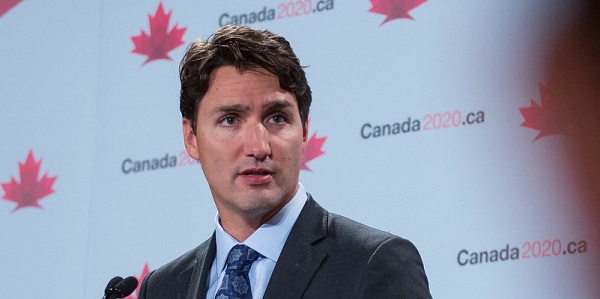
 Energy13 hours ago
Energy13 hours agoOttawa’s proposed emission cap lacks any solid scientific or economic rationale
-

 Bruce Dowbiggin1 hour ago
Bruce Dowbiggin1 hour agoCHL Vs NCAA: Finally Some Sanity For Hockey Families
-

 Brownstone Institute1 day ago
Brownstone Institute1 day agoFirst Amendment Blues
-
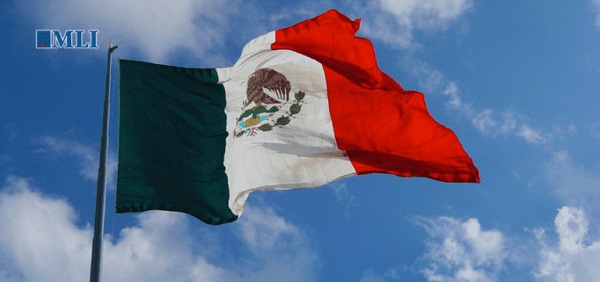
 Crime2 days ago
Crime2 days agoMexican cartels are a direct threat to Canada’s public safety, and the future of North American trade
-

 Business2 days ago
Business2 days agoDEI gone?: GOP lawmakers prep to clean house in federal government














